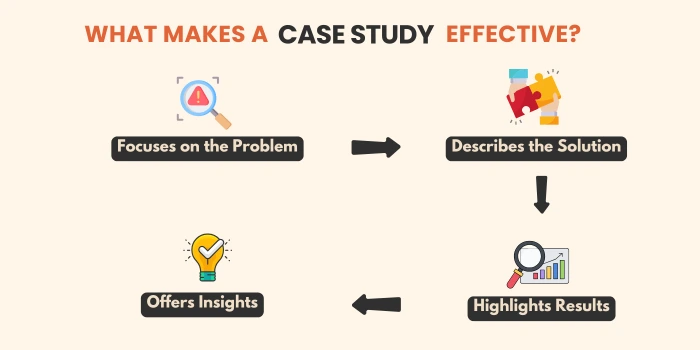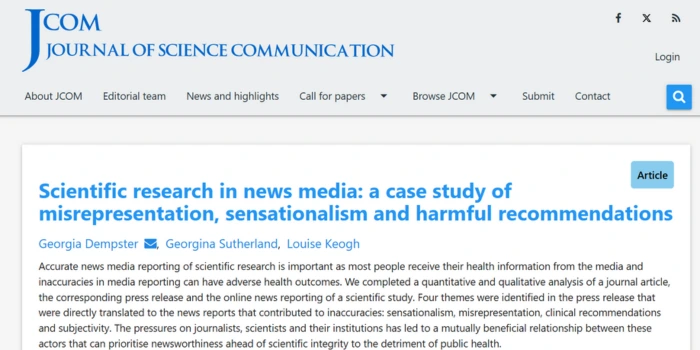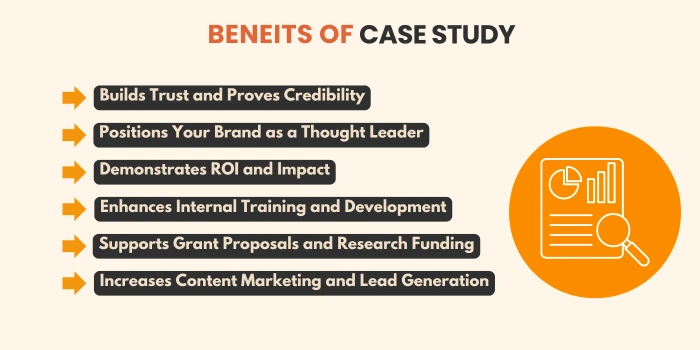

What if a simple shift in business strategy could transform your customer retention rates? That’s exactly what happened to Sarah, a marketing manager at an e-commerce company. No matter what business strategies she tried, nothing seemed to work.
Frustrated, she stumbled upon a case study detailing how a similar company had turned their retention rates around using personalized email campaigns and customer behavior analysis. As Sarah read through it, she realized she had overlooked key steps, especially in segmenting customers and tailoring messages based on their behavior.
Inspired by the insights, she adjusted her business strategy, and soon, her company’s retention rates began to improve.
That’s what a well-written case study can do. When used effectively, a case study can reveal unique insights, provide deep context, and offer potential customers, clients, or stakeholders a clear view of what they can expect.
Let’s see what makes a case study an invaluable asset and when it should be used.
A great case study is like a roadmap that guides readers through a real-world challenge, showing them the twists and turns and the path to success. It starts with a clear problem, walks through the business strategies used to address it, and ends with measurable outcomes that highlight the journey's success.
The most effective ones don’t just share results; they include insights, relatable examples, and data that validate the approach. Much like a trusted map, a strong case study helps readers navigate similar challenges with confidence and clarity, inspiring them to take the next step.
An effective case study:

Check out our blog on How to Write a Case Study that Attracts New Clients
Now that you know what makes a case study effective, let’s look at the different types of case studies and when to use them, depending on your goal and subject.
Explanatory case studies are great when you want to understand why something happens and how different factors are connected. They help you explore cause-and-effect relationships in real-life situations.
For example, if you're looking into how employee motivation impacts productivity, an explanatory case study can give you insights into the reasons behind the patterns you observe. This type of study helps you dig deeper and uncover the "why" behind the trends.
Here is one such case study example

A descriptive case study focuses on providing a detailed and accurate account of a specific situation or group, without trying to explain why things happen. It answers what happened, offering a thorough look at a subject in its real-life context.
For instance, a company could use a descriptive case study to explain how it successfully launched a new project, breaking down each step of the process without exploring the reasons behind the success. Here is a case study on how
Lexiconn helped Amazon grow web traffic through blogs.

Exploratory case studies are perfect when you don’t have much information about a topic and want to learn more. They help researchers explore new areas, ask fresh questions, and gather initial data that can guide future studies.
Exploratory case studies are especially helpful when studying emerging trends, such as new technology or societal changes, where current data might not cover everything you need to know. They give you the chance to gather key insights that will shape future investigations.
Here is one such example.

Collective case studies involve looking at multiple cases that share a common theme. This approach helps you compare different perspectives and gain a broader understanding of the issue you're studying.
For example, a collective case study might explore how different companies are adapting to remote work, highlighting their challenges and strategies. This would give a wider view of how the same issue plays out across different cases.

A single case study zooms in on one specific instance, organization, or individual, providing a deep and detailed look at that particular case to understand it fully.
For instance, a business might use a single case study to explore how a company successfully turned around its performance in a tough market. It’s all about getting a detailed understanding of that one case.

Intrinsic case studies focus on understanding a unique case for its own sake. Unlike instrumental case studies, which are meant to provide insights into broader topics, intrinsic case studies dig deep into the case itself.
For example, if you’re analyzing a landmark legal case or an extraordinary scientific discovery, an intrinsic case study allows you to explore what makes it special without focusing on applying the findings to other cases. Here is one such example.

Instrumental case studies are used to explore larger issues, theories, or concepts by studying a specific case. The focus is on using the case as a way to understand or explain broader topics.
For example, examining multiple diseases and understanding their effects can help understand the broader effects of the disease. It’s all about using the case as a stepping stone to understanding something bigger.

Read our blog onHow to Format Your Case Study for Maximum Impact
Case studies are incredibly versatile and can be used in a variety of ways. They're not just for marketing teams—they offer a lot of benefits across different functions.
Here are some key benefits of how a case study can make a difference:

When you want to show that your solution really works, case studies are your best friend. Instead of just claiming that your solution is effective, you can share real-life examples of how it has worked for others.
Potential clients or customers trust the success stories of others more than just a company’s claims. A well-written case study serves as a powerful endorsement.
Case studies that showcase innovative solutions or unique approaches do more than just highlight success—they position your company as a leader. This marketing strategy helps to show that you're solving problems and demonstrating that you're ahead of the game in your field, by showing off your work.
Case studies aren’t just for your customers or clients—they can be incredibly valuable for your internal teams, too. Use them to train new employees or help teams within your organization learn from past experiences.
They provide lessons in problem-solving, decision-making, and critical thinking, which can be crucial for onboarding and making sure everyone understands how the company tackles challenges.
In roles where you need to prove the value of a project or justify budgets, case studies are an excellent tool. They’re especially powerful for showing the long-term impact of a product or service, proving that the results go beyond just initial implementation.
For industries like B2B, education, or healthcare, case studies help quantify success and become a compelling argument for your offering's effectiveness.
For nonprofits, researchers, or educational institutions, case studies can be the key marketing tool to securing grants or funding. They provide concrete examples of how an approach has worked in the past, showing potential funders that the investment will lead to real-world results. These case studies paint a clear picture of successful projects, making them crucial when applying for financial support.
Case studies are fantastic content marketing ideas for business strategies. They give you the chance to go deep and answer a potential client’s questions in more detail than a blog post or product page might. When used in email campaigns, landing pages, or newsletters, case studies help nurture leads and guide prospects through the sales funnel, bringing them closer to making a purchase.
In the end, case studies are incredibly valuable for a variety of reasons. They help you back up your claims with real examples, demonstrate the true value of your work, and provide insights that can guide future decisions.
If you’re looking to create compelling case studies that truly make a difference, Lexiconn is here to help. We specialize in crafting case studies that highlight your success and connect with your audience. To get started, we offer a free pilot, and a 30-minute consultation to discuss how we can help take your content marketing strategy to the next level.
Let’s connect and start turning your success stories into powerful business strategy tools!



I have read and accept the Privacy Policy
Read More